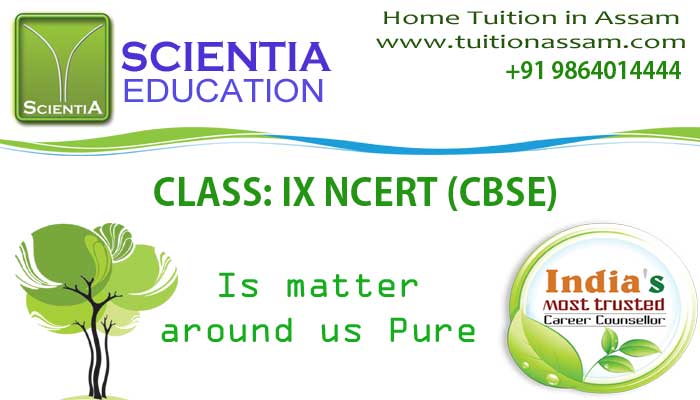
Is matter around us Pure
CLASS: IX NCERT (CBSE)
SUMMARY
• Matter is anything that occupies space and has mass
• Element is a pure substance, which can neither be decomposed nor built from simpler substances by any physical or chemical means. It contains only one kind of atom.
• Broadly speaking, elements can be divided into metals, non-metals, metalloids and noble gases
• A compound can be decomposed into two or more simpler substances. In its formation, energy is usually evolved or absorbed.
• The smallest particle of an element or a compound, which can exist in the free state, is called a molecule.
• Impure substances are mixtures. They can be a mixture of elements or compounds or both, mixed in any proportion. Each constituent of the mixture exhibits its own properties.
• Constituents of a mixture can be easily separated while components of a compound cannot be separated easily.
• Sedimentation followed by Decantation is used to separate an insoluble solid from a liquid.
• Filtration is a more effective method of separating an insoluble solid from a liquid.
• A soluble solid can be obtained back from a liquid in which it dissolves by the process of evaporation.
• Distillation is employed to separate and re-obtain both the solute and the solvent from a solution.
• Fractional Distillation is used to separate two miscible liquids whose boiling points differ by at least 300C.
• Chromatography is based on the difference in absorption of different substances on the surface of a solid medium that is used to separate a mixture, containing components in minute quantities.
• True solution is a homogenous mixture of a solute and a solvent with high degree of dispersion where the particles are between 0.1 nm to 1 nm.
• Solutions can be aqueous or non-aqueous, saturated or usaturated, concentrated or dilute.
• Solubility is defined as the number of grams of a solute that dissolves in 100g of a solvent to form a saturated solution at a given temperature and pressure.
• Suspension is a heterogeneous system consisting of particles of a solid bigger than 100 nm to 200 nm suspended in a liquid medium
• Colloidal state is a heterogeneous dispersion of two immiscible phases where the size of a colloidal particle lies between 1-100 nm.
• A chemical change is a permanent, irreversible change in which a substance changes in its composition producing one or more new substances.
• A physical change is a temporary and reversible change in which the physical properties of the substance change without altering the composition of the substance.













